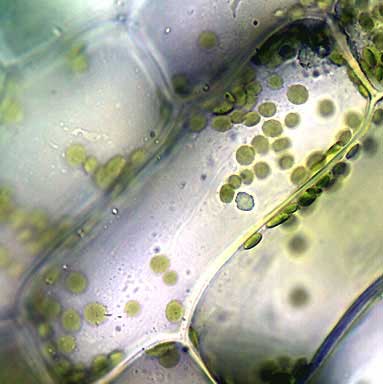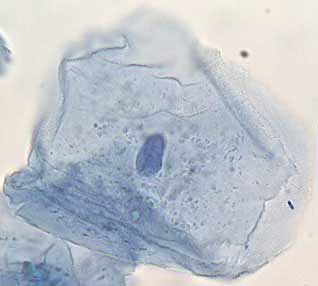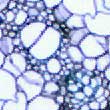|
|
|
|
Cell Structure
|
A Comparison of Cells Commonly Seen in Lab
Bacteria:
prokaryotic. Very small. No nucleus, no chloroplasts, no mitochondria. Do have a cell wall.
Plant cells: eukaryotic. Relatively large. Have a nucleus, have mitochondria, sometimes have chloroplasts. Have a large central vacuole and a cell wall.
Animal cells: eukaryotic. Relatively large. Have a nucleus and mitochondria. Never have chloroplasts. Lack a cell wall, and have no central vacuole.
...
|
This Elodea leaf cell exemplifies a typical plant cell. It has a nucleus, and a stiff cell wall which gives the cell its box-like shape. The numerous green chloroplasts allow the cell to make its own food (by photosynthesis).
The central vacuole takes up most of the volume of the cell. It is transparent, but you can see where it's pressing the chloroplasts up against the cell wall, especially at the ends of the cell.
Like animal cells, the cytoplasm of this plant cell is bordered by a cell membrane. The membrane is so thin and transparent that you can't see it, but it is pressed against the inside of the cell wall.
This cell was alive and at 1000x magnification when it was photographed. |
 |
|
 |
This human cheek cell is a good example of a typical animal cell. It has a prominent nucleus and a flexible cell membrane which gives the cell its irregular, soft-looking shape.
Like most eukaryotic cells, this cell is very large compared to prokaryotic cells. For scale, notice the pair of dark blue bacteria cells sticking to the right edge of the cheek cell. The bacteria are only a fraction of the size of the nucleus, but their tiny size is typical for bacteria.
This cell was stained blue and was magnified to 1000x its normal size when it was photographed. |
|
|
|
|
